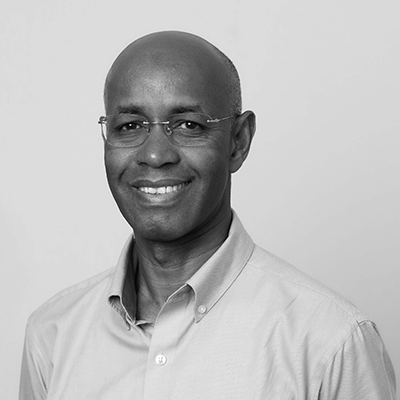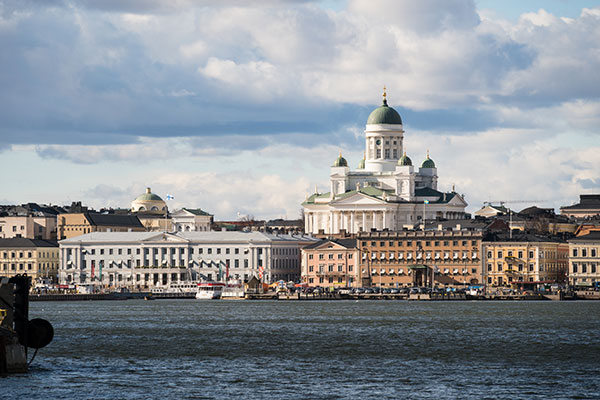On an individual level, I believe there is a danger that this creativity benefits only a few people by, for example, getting a good education leading to more desirable qualifications and careers making them more confident, allowing them to earn a good living and helping their families to have a better life. But the power to create on a community level can be so much more than this.
It means mobilising and organising communities and equipping them with the skills and knowledge to strengthen and enhance communities’ ability to work together by achieving goals that are important and meaningful for communities’ life. Power to create is giving these communities the confidence and knowledge to have the control and ownership of their life and design the destination of their future. I believe this happens at community level when deliberative community mobilization has taken place followed by enhancing community capacity to engage, increase community’s confidence and expand communities’ social connections and wellbeing
What do we mean by Community Mobilization?
Academics might define the term “community mobilization” as a “capacity-building process through which community individuals, groups, or organizations plan, carry out, and evaluate activities on a participatory and sustained basis to improve their health and other needs, either on their own initiative or stimulated by others (Howard-Grabman, & Snetro, 2003).That is the formal definition, but the main aim of community mobilizations are to help them to identify their specific needs and the issues that matter to them most, and respond to those needs through developing long term solutions. This is where communities’ power to create starts from, and ends where all communities can feel part of decision making processes and be engaged and influential in the issues that matter to them.
Communities should be at the core of the power to create idea
The important thing for community mobilization is that community members come together and discuss their problems and, where possible, get support and advice from professionals and service providers. In this context professionals should be the facilitators who work with communities and help them to analyse their needs. But communities should be the main drivers who hold the steering wheel of their future. It is also important to keep in mind that service providers and government agencies must give or equip communities with the right skills or appropriate knowledge and empower them through community participation. Any projects for communities are likely to fail unless communities are placed at the heart of change.
A well organised community, empowered with knowledge and skills, can be a valuable platform to increase general awareness of preventing a particular problem and the implications it can have on the health and wellbeing of communities. In fact this is something the RSA explained in more detail through its Connected Communities programme of work.
People should not be just be consumers of health services but should be involved in the design and decision making process of the services that effect their lives. Communities have untapped assets which can be a solution to address social determinants of health issues, but this depends on how service providers and professionals uncover those community assets and skills and collaborate with them. In the past, public service providers and professionals always focus on deficits, needs and solving problems, but there has always been an absence of systematic knowledge about the wealth of experiences, knowledge, practical experiences and passion of local people and community organisations, and potential for the community to be an equal partner with government and its service providers. Recently, many community groups and public service agencies are using community asset mapping methods to reenergise communities, raise awareness and find new resource to empower them.
Mobilising communities means you are bringing community’s power together by helping them to achieve something positive which impact on their life. Community’s Power to create comes through by mobilizing communities and community organisations to identify and formulate communities’ priorities. It is bottom up approach which enhancing community capacity and ability to understand problems and challenges which they face and find a long time solution.
My personal experience of community mobilization occurred a year and half ago when a group of us, mainly my friends from the Somaliland community in east London came together and discussed the best way we can help a remote small village in Somaliland with very limited access to health services. The closest medical centre is currently 30 miles away from the village. You can imagine if a mother from the village went into labour in the middle of the night and there were no medical professionals to can help her and her baby, they are much more likely to face danger and complications.
After a long discussion among our group and consultation from the community in the village, we decided to help this village to build a medical health centre which the whole community can benefit from and cover the community’s basic medical needs. Working with the ministry of health in Somaliland, we agreed that if the community covers the cost of the medical centre, around 13,000 US dollars, then the government would provide two nurses, medicines and other necessary equipment required for it to be operated successfully.
Each one of us agreed to pay $500 (12 people) and then mobilise the Somaliland community in Newham and arranged a community meeting to show our project to this community and ask their help to build the medical health centre for the village. Luckily in our first meeting with the community, we raised more money than we needed. Building on the medical health centre started within one year of our first meeting and was completed at the beginning of April. These are the pictures from the MCH
The medical centre is not functional yet and it needs to be equipped with medical equipment, nurses and medicines, but these resources will come very soon. Here we can understand that the hope of the village to get their own MHC was attainable and they are hopeful that one day that they will get their own comprehensive medical service in the village which is run and managed by the community.
This project would not be possible without mobilising a large community and the help from both the people in the village and the Somaliland community in Newham. The main idea to build this MHC came from the village in Somaliland and they were the main drivers of the project where our involvement was to provide financial support and to persuade the Somaliland health minister to be involved. The Power to Create can truly prosper when community leadership, mobilisation and collective ownership of problems is truly enabled and supported.
Related articles
-
What we didn't learn from Finland's basic income experiment
Aleksi Neuvonen
Finland's trial focused on those with a history of unemployment. The next one should be universal.
-
What can we learn from Fellows in Southeast Asia
Lauren Orso
In March and April 2019, the RSA's global team will be visiting Singapore, Bangkok and Kuala Lumpur on the hunt for social innovations and exploring potential for an action-oriented Fellows network.
-
Can radical politics work?
Anthony Painter
What do Jeremy Corbyn, Donald Trump, and Vladimir Putin have in common? Not as much as we've been led to believe, argues Anthony Painter




Be the first to write a comment
Comments
Please login to post a comment or reply
Don't have an account? Click here to register.